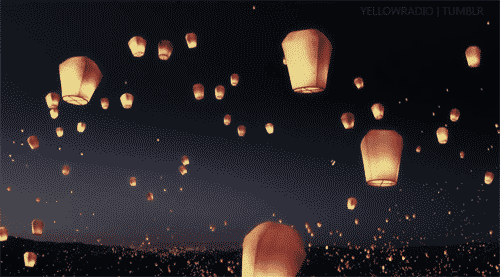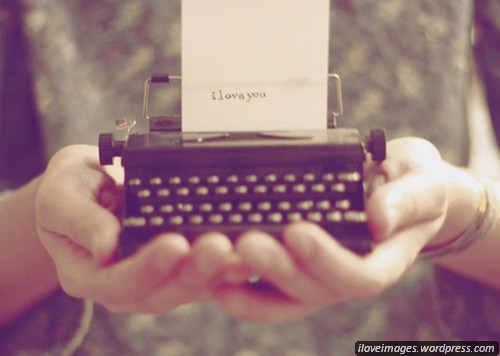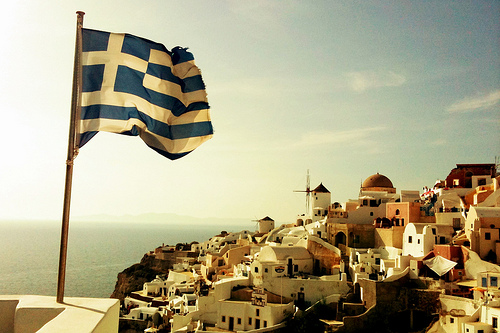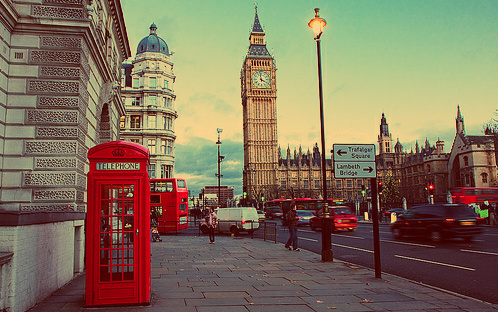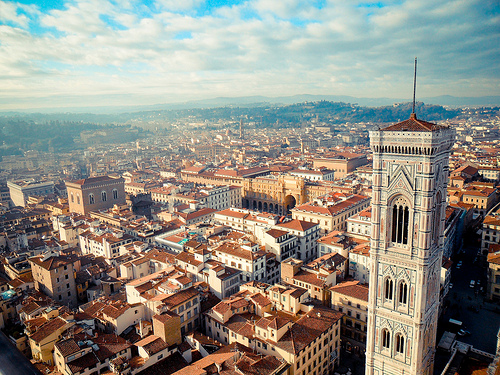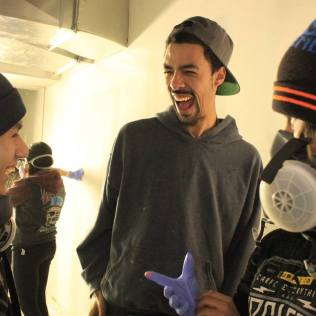
The Drawing Board owner, Nakita Valerio, had the pleasure of sitting down with graffiti artist and community leader, AJA Louden to talk about his art, his genre and all of the incredible social justice work he is doing with both. As always, Louden proved himself thoughtful and eloquent beyond measure and it is our joy to speak to such passionate, intellectual individuals, as well as uplift their work by providing it with the public platform it deserves – something to which Louden is no stranger. As the founder of the Aerosol Academy, a participant in CypherWild and avid supporter of First Nations community causes, Louden has the perfect marriage between doing what he loves and doing something that matters: his art is where those two principles meet.
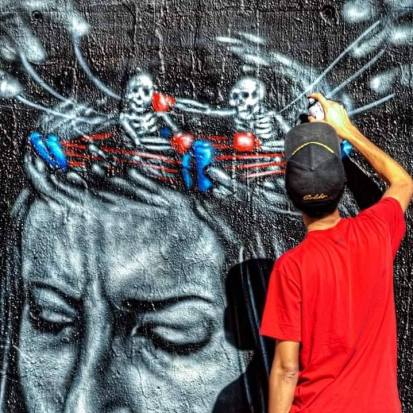
Louden grew up in Calgary and recounts his first distinct memory of seeing an incredible graffiti display when he was around ten years old. “I don’t have a lot of contextual memory for it, but I know I was traveling in the backseat of a car, even if I don’t know where I was going or anything. These kinds of memories are the best because they are hazy but so foundational – something really jumps out at you through a fog. I saw a series of five or six light posts and each of them had the word “Trikone” written on them vertically. I couldn’t help but wonder “Who was doing this? Who would do this?” It was like a rabbit hole of questions I was falling into trying to reconstruct the story behind this public display. I just kept imagining six people standing there and painting the posts at the same time – I could see it like a film in my head, and for me it represented something hidden and esoteric – a private world made public that not a lot of people have access to. After that, I started seeing tags all the time – they stopped fading into the background for me.”
He didn’t do much about it but in middle school he got into hip-hop and break-dancing. In such communities, people are encouraged to develop a new identity that will be connected to their work and Louden was gracious enough to reveal (laughing the whole time) that his middle school name was “Spyda.” Of course, we vowed never to let him live it down, but Louden, with his sharp wit and humble demeanour, was quick to offer himself up, telling us the story of his first graffiti experience:
“I remember that one of my first graffiti moments was carving that name into my desk at school and then filling it in with markers. I didn’t think of it as wrong at all. It was just putting myself out there. Later, I wrote an exam and on the back page of the test, I wrote the same tag. Well, not surprisingly, my teacher saw the graffiti and then the tag on my test and pulled me aside. This was my first clash with authority over my graffiti. I was so brutal because I just told him a bold-faced lie: I had seen the graffiti and copied it onto my exam, of course.”

Despite this first foray into this world, Louden says it left him a bit. He didn’t take visual arts seriously and was not informed on the history of the culture around it early on. In high school, he became rebellious and anti-authority – what some might call “a critical thinker.” He ended up taking a year off after high school and this, combined with moving to Edmonton for university and having more control over his own time ignited a search for his identity. He ended up studying sciences and much of what he learned is used in his painting work now, including lessons from biology and anatomy but also the soft sciences like psychology and sociology. Despite dedicating himself to his studies, he never saw himself working in a lab and realistically, employment prospects were low.
Louden notes that the biggest thing he took from that experience was realizing how passionate he is about knowledge and learning. It has informed how he asks questions and expresses himself artistically as well, especially since subscribing to several academic journals. He credits scientific observation with informing his ability to recognize patterns, activities and methods of expression to elicit affect.
While Louden’s work seems so visceral and spontaneous, he does mention the influence of technology in what he does. He has a graphic design background as well and that has affected his painting as an artist by putting different tools in his repertoire. He admits to being deeply interested in the technology of actual paint which is not something people often think about. “Changes to paint have reflected the commercialization and commodification of graffiti which is not necessarily good or bad. There are some people who have strong opinions about it but I just view it as change, like anything else. As a result, an artist these days has a whole lot of caps, cans, propellants and pigments to choose from, each of which can dramatically alter how they express themselves.”
Of course, Louden is also inspired by the masters like Caravaggio or by those who are really passionate about typography, citing a classic book by Robert Bringhurst called The Elements of Typographic Style which he says is essential for painters using words. The book helps us to understand how words have shapes of meaning and makes us more conscious of those we choose to express ourselves.

Despite all of this brilliant forethought, Louden still has a hard time answering the question of how he would describe his work now, noting that when he first started getting back into painting, he worked solitarily for four or five years. In the graffiti world, that meant he was using styles that hadn’t been passed down through the community; however, as he broke into the community more, he started meeting more people and getting a variety of influences. And because of this diverse background, Louden is influenced by different, somewhat disparate things. He might describe his work right now as being about realism with some impressionistic effects. He is into portraiture and his lettering varies depending on the project, adapting to his expressive needs: It can be somewhat abstract at times while his subject matter revolves around authority, conflict and asymmetric warfare.

Recently, Louden has put these themes to good use, doing important community work in indigenous communities and other humanitarian work as well. He had the pleasure of doing an AFA one week workshop at Beaver First Nation, near High Level where participants focused on the theme of finding identity through creativity and in place. A strong understanding of one’s identity becomes a powerful tool in the uneven match between oppressor and oppressed. Louden states that he tends to be less interested in struggles when the power is matched, helping participants to draw attention to discovering who they are, the psychological effects of occupation, reigniting one’s relation to the land, and how traditional wayfinding is communicated. Discussing one’s orientation in their environment and how this is dictated by our historical upbringing and cultural awareness was a particularly moving point in the project.
Additionally, Louden has been thinking to do some work on the parallels between Palestine and the plight of indigenous peoples in Canada, drawing symmetries between their experiences with colonialism and invasion. This has been a driving interest for him and a personal curiosity and is part of how he thinks more critically about the land he lives on and the context of where he paints in the environment it sits. Louden is nothing if not conscious of being respectful of the fact that this is Treaty 6 territory, effectively stolen land, and taking serious steps to avoid the appropriation of settler narratives into his work unintentionally, while at the same time not telling stories that are not his to tell. This careful balancing act is part of the reason he flourishes in graffiti education and in helping others express their own stories as well. Louden notes,
“In reality, I’m connected to the colonial narrative and the indigenous story through the land; it is part of my history too.”
Another high-profile project Louden got to work on was a wayfinding and signage program for the net-zero Mosaic Centre, creating landmark art pieces and using recycled parts from the building construction to do so. It was an amazing project because it got him thinking more consciously about how words perform a communicative function but are also aesthetic. The group collaborated with a neurologist at the University of Calgary who was studying brain cells that define our spatial awareness and how people navigate spaces, their literal place-making cells – research which has huge implications for the creation of landmark artworks and its relation to the interpretive capacities of our minds, even if such landmarks have a long historical use, such as Inukshuks.
Ever humble, Louden casually notes that he has also been fortunate to do a lot of workshops through Aerosol Academy which is a graffiti school he started. Through this group, he has developed an educational workbook – a kind of history of unsanctioned public art which examines culture, graffiti practice, tools and techniques and how to make art in legal spaces. And he has also had the privilege of opening up some street art walls as a lead artist consulted by the City of Edmonton and chosen as the city’s artistic representative. Traditionally, walls are about separating spaces and keeping things apart but Louden is unique in that he has tasked with building communities around walls, as gathering spaces to meet and practice the craft.

Through these walls and other work, Louden is inspired to resist, especially in breaking down the false binaries between art and graffiti, and graffiti and crime. Louden is aware that there is a lot of scapegoating that happens about graffiti primarily because it is an intensely visual form of protest and the ultimate unruliness to change the landscape around us. However, in this context, it is important to realize that graffiti is a symptom of other social ills and a way for the disenfranchised to express themselves when made voiceless. The public expression of graffiti provides a venue for people to have their voices heard in terms that they dictate.
Louden points to the exaggerative campaigns against graffiti by hegemonic powers that be show an imperfect approach to the understanding and remedying of social ills.
“Graffiti is easy. It makes it easy to look like the government is doing something when they clean graffiti up, but in reality it’s a bandage solution masking what is still simmering below the surface.”
Ever the scholar, Louden cites a criminology theory called Broken Window Theory that continues to influence public policy development because it claims that where signs of crime exist, crime will accumulate. The theory is so named because it uses the example of broken windows in destitute neighbourhoods as an example. For Louden, he doesn’t see how this applies to graffiti at all, except to those who are not sufficiently well-versed in graffiti language to interpret what kind of painting exists in certain areas. Ultimately, it is the quality of graffiti that dictates more information about the state of a community and indicates its richness, not poverty, of culture.
Louden’s project of “gathering walls” seems like the ultimate reclamation of a symbol of colonial oppression, turning its meaning on its head to give the oppressed a voice. But resistance is not the only regular theme of his work. Louden is also inspired by what those in the trade call “them feels” – a term to describe a moment of inspiration or emotion. He is influenced by something as simple as an aesthetic glimpse, the emotional response one gets when they look at something.
The other cause that calls him to certain avenues of visual expression is the study of restorative versus retributive justice. Louden describes the latter as what we are accustomed to in North American settler culture: There is a lack of contact between a victim and their perpetrator because their conflict is mediated through the state and the resolution is usually a state-mandated punishment of the offender. Restorative justice models are based on traditional indigenous models and aim at “restarting” a relationship between “victim” and “perpetrator”. The meditation is not of the punishment but of the relationship that has been damaged without recourse to revenge narratives. The model is based on a circle in which both groups communicate with one another and an authority mediates the discussion to initiative self-reflectivity. The goals are understanding not only why the person violated the relationship but to make them understand the ripple effect it had on the lives of everyone around the victim. Louden says that if graffiti artists were more aware of the effects – positive or negative – of their painting on the world around them, it would go a long way to bridging the disconnect between the painters and the community in which they paint. Venues for communication, breaking down the fear of graffiti, and its decriminalization would go a long way in showcasing the realities of a sorely misunderstood group. Not a lot of people realize that less than 2.5% of all graffiti is gang-related, but the societal obsession with it is a symptom of capitalist society’s obsession with private property – a cultural phenomena, that contrary to popular belief, is historical and not universal.

Ultimately, this is what Louden puts into his work but he is clear when he says that there doesn’t have to be a higher ethos behind graffiti work. Rather, self-awareness among graffiti artists and changing the language around public art in the communities it exists would go a long way to creating mutual understanding between people.
What all of this boils down to is a commitment, from Louden, to education creating channels of communication. He believes in providing people with tools to understand the Other and argues that sometimes doing this through art is the best way because it often speaks right to the heart, “them feels”. Through his work, something as ethereal and fleeting as empathy is a very real, achievable goal.
As we drew our interview to a close, Louden wanted to leave our audience with the final inspirational thought:
“Look a little closer. There are a lot of rabbit holes to peer into and there is a richness to life you can easily miss. You have you use your eyes and your feelings to see it.”
An incredibly talented and ever humble artist, AJA Louden is just the kind of visionary that the Canadian arts and graffiti scene need – someone to who gathers people and takes back the walls we build between one another.





 This blog is an op-ed piece written by Rachael Heffernan, writer and researcher for The Drawing Board.
This blog is an op-ed piece written by Rachael Heffernan, writer and researcher for The Drawing Board.
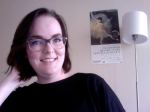



 The classic stereotype of a writer penning the next great novel in their moleskin notebook is a bit dated, particularly when technology has grown leaps and bounds to help facilitate your writing, whether in the form of editing apps, inspiration tools or time-management programs. Abhorring the modern writing world and all that is available to a writer seems to me to be a bit of status thing, invoking the classic artist martyrology – that if you don’t suffer for your art, it’s not art. Let me tell you: this is 19th Century trope that just. Will. Not. Die. Writers are usually artists but they are also craftspeople in a skilled trade. They have to work really hard to do what they do and they produce thousands of pages before they ever write a paragraph of magic. Anyone who tells you otherwise is lying or has a magic genie lamp stashed away somewhere.
The classic stereotype of a writer penning the next great novel in their moleskin notebook is a bit dated, particularly when technology has grown leaps and bounds to help facilitate your writing, whether in the form of editing apps, inspiration tools or time-management programs. Abhorring the modern writing world and all that is available to a writer seems to me to be a bit of status thing, invoking the classic artist martyrology – that if you don’t suffer for your art, it’s not art. Let me tell you: this is 19th Century trope that just. Will. Not. Die. Writers are usually artists but they are also craftspeople in a skilled trade. They have to work really hard to do what they do and they produce thousands of pages before they ever write a paragraph of magic. Anyone who tells you otherwise is lying or has a magic genie lamp stashed away somewhere.
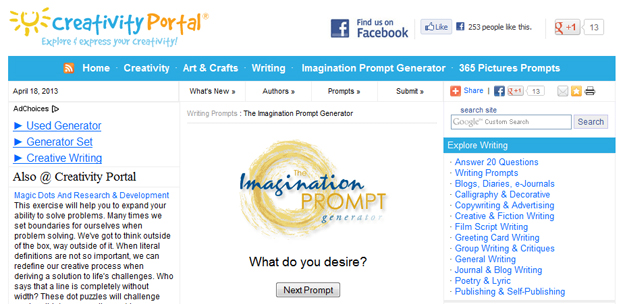 Imagination Prompt is a great tool for someone who just doesn’t know how to get started. Whether you are a serial blogger or are working on a short story for publication, the simple push of the button on this site can really help get the wheels a-turnin’ and the words a-spinnin’. With writers, it is often just a tiny push we need to get past a block and then a cascade of ideas can come tumbling down to us.
Imagination Prompt is a great tool for someone who just doesn’t know how to get started. Whether you are a serial blogger or are working on a short story for publication, the simple push of the button on this site can really help get the wheels a-turnin’ and the words a-spinnin’. With writers, it is often just a tiny push we need to get past a block and then a cascade of ideas can come tumbling down to us. ZenWriter is a downloadable app for PCs that is meant to minimize distractions that can take away from your writing productivity – provided you are doing your writing on a computer, which is likely these days. Journalling might seem romantic but it can be a bit of a time waster as few people will take the time to transcribe what they have written in a notebook into something on the typed page. Additionally, things can look really different when written by the hand and just might not have the same punch when they are put into more conventional printed formats. Either way, something like ZenWriter is good for keeping you focused on your writing and includes therapeutic music and natural scenery in the background to help you relax and get your work done.
ZenWriter is a downloadable app for PCs that is meant to minimize distractions that can take away from your writing productivity – provided you are doing your writing on a computer, which is likely these days. Journalling might seem romantic but it can be a bit of a time waster as few people will take the time to transcribe what they have written in a notebook into something on the typed page. Additionally, things can look really different when written by the hand and just might not have the same punch when they are put into more conventional printed formats. Either way, something like ZenWriter is good for keeping you focused on your writing and includes therapeutic music and natural scenery in the background to help you relax and get your work done. Stayfocusd is a similar idea to ZenWriter, except that it is a Google Chrome app that limits the amount of time you can spend on time-wasting websites. It is completely customizable and can block entire websites, because who’s kidding? We all have a secret love of Buzzfeed or Distractify or some other evil click-bait webpage that is just so interesting you can’t help yourself. This is how the internet can destroy lives people. Put a timer on it and stop wasting time. Get ‘er done, as we say in Alberta.
Stayfocusd is a similar idea to ZenWriter, except that it is a Google Chrome app that limits the amount of time you can spend on time-wasting websites. It is completely customizable and can block entire websites, because who’s kidding? We all have a secret love of Buzzfeed or Distractify or some other evil click-bait webpage that is just so interesting you can’t help yourself. This is how the internet can destroy lives people. Put a timer on it and stop wasting time. Get ‘er done, as we say in Alberta. Cliché Finder is helpful if you don’t want to suck as a writer. Cliches might seem like the best thing since Betty White but, trust me, they do worse for your writing than a thousand monkeys on a thousand typewriters. At least the monkeys might show a shred of ingenuity because it is unlikely that they have cultural memes that can penetrate their writing the way clichés can. But enough about monkeys, just use this app to seek out those sneaky stereotypical similes and destroy them.
Cliché Finder is helpful if you don’t want to suck as a writer. Cliches might seem like the best thing since Betty White but, trust me, they do worse for your writing than a thousand monkeys on a thousand typewriters. At least the monkeys might show a shred of ingenuity because it is unlikely that they have cultural memes that can penetrate their writing the way clichés can. But enough about monkeys, just use this app to seek out those sneaky stereotypical similes and destroy them. Meetup.com is a website that might help you find writing groups in your neighbourhood. Check it out or post there to find like-minded people who are interested in working on their craft as much as you are. It will get you into the habit of writing for your group, editing and proofreading the work of other people, and might even throw in a healthy dose of competitiveness that will get your creative juices flowing. Cliché alert! Should’ve ran that one through number 4! See? Even the most practiced writers fall prey to classic failings now and again. Get on the technology train and get moving.
Meetup.com is a website that might help you find writing groups in your neighbourhood. Check it out or post there to find like-minded people who are interested in working on their craft as much as you are. It will get you into the habit of writing for your group, editing and proofreading the work of other people, and might even throw in a healthy dose of competitiveness that will get your creative juices flowing. Cliché alert! Should’ve ran that one through number 4! See? Even the most practiced writers fall prey to classic failings now and again. Get on the technology train and get moving.